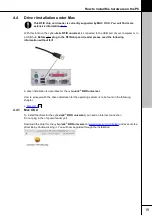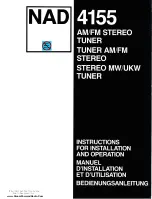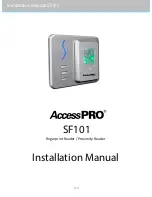
Technical references
25
7.2
Technical operating environment
The technical environment for the cyber
Jack
®
RFID universal
comprises a PC equipped with a USB
interface and drivers to which the cyber
Jack
®
RFID universal
is connected.
Contact-type chip card interface
The cyber
Jack
®
RFID universal
chip card reader processes chip cards the body of which is physically
specified in the ISO standards 7810, 7813 and 7816, part 1. The contacting unit of the chip card reader
contacts electric contacts of a microprocessor applied to the body of the card. Its position and
electrical assignment is defined in the ISO Standard 7816 part 2. The cyber
Jack
®
RFID universal
chip
card readers process both processor cards and the asynchronous communication protocols T=0 and
T=1, and memory cards with the synchronous 2-wire, 3-wire and I²C-bus communication protocols.
These communication protocols are specified in the ISO 7816 part 3 (asynchronous) and in
manufacturer-specific data sheets (synchronous).
Contactless chip card interface
The chip card reader support protocol types A and B according to ISO/IEC 14443. Operation of
contactless chip cards by the chip card reader takes place in compliance with the ISO/IEC 14443-2,
ISO/IEC 14443-3 and ISO/IEC 14443-4 standards.
Secure PIN
The secure PIN input is performed via the communication protocols specified in ISO 7816 part 3. During
the Secure PIN input mode the command filter security function ensures that only approved commands
are transmitted to the chip card. All other commands to the chip card are blocked by the chip card
reader (c.f. chapter on
).
7.3
Security functions
Secure PIN input is one of the most important security functions of a chip card reader from security
class 2 upwards. Secure PIN input is feasible with both a contact-type and a contactless chip card. To
ensure that the PIN is not stored in the chip card reader special security functions have been
implemented in the cyber
Jack
®
RFID universal.
The following security functions have been
implemented in the cyber
Jack
®
RFID universal
:
Separation of applications
The cyber
Jack
®
RFID universal
prevents the applications from influencing one another by separating
them. The commands received from the PC are passed on to the relevant application which then fully
processes them. Only when the commands have been processed does the PC accept new
commands.
Module update
It is possible to add new modules to the chip card reader with the aid of the Device Manager (refer to
). These new modules (kernel, application) can be acquired from the
REINER SCT homepage (www.reiner-sct.com). In order to upload a new module into the chip card
reader the origin of the module is checked by the chip card reader itself as an important security
function. The chip card reader only accepts modules which are electronically signed by REINER SCT
by means of the RSA method. Each time before uploading a new module the chip card reader always
performs a signature check. Modules can be uploaded and updated individually, or all together.
Uploaded modules do not influence the functionality of the other modules. It is impossible to store a
module in the chip card reader which has not been electronically signed by REINER SCT. REINER
SCT provides only evaluated versions. It is impossible to update the cyber
Jack
®
RFID universal
to an
older version.
Communication separation
After activating the "Secure PIN input" mode by an application, the cyber
Jack
®
RFID universal
interrupts the communication with the PC, switches the yellow LED into the flashing mode and the
corresponding dual LED (green for contact-type, blue for contactless chip cards). In secure PIN input
the cyber
Jack
®
RFID universal
records all keyboard inputs and passes them on exclusively to the
card. Before communication separation is released these data are deleted by another security function
°(reprocessing).
25
3






































